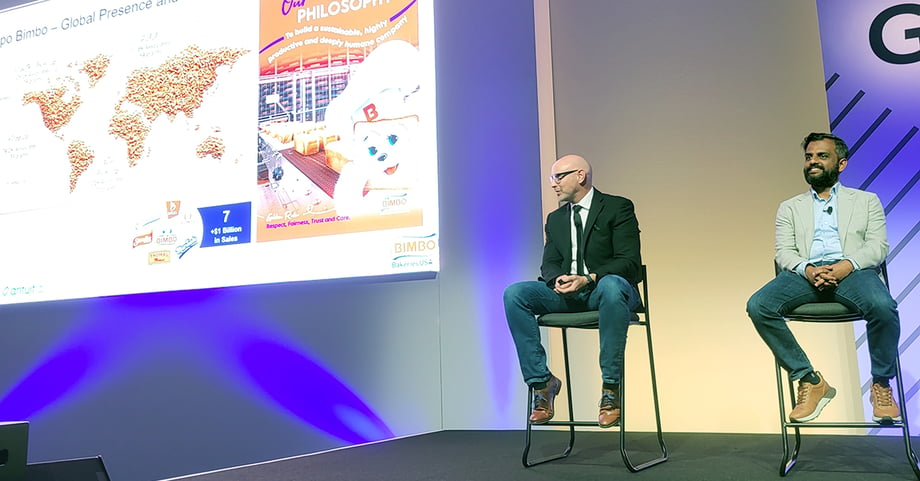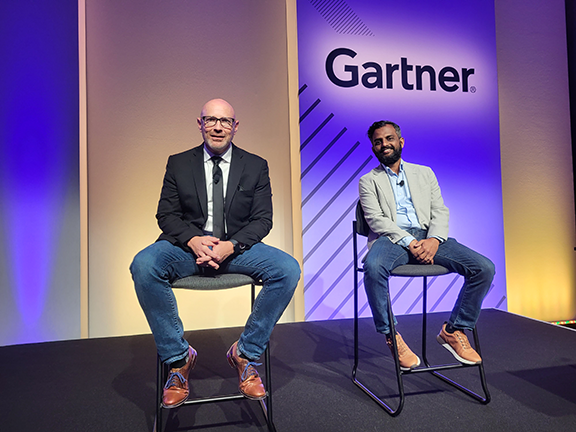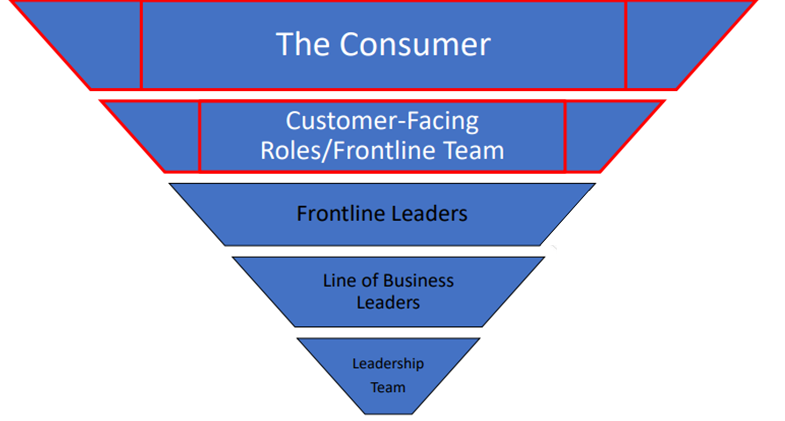
Following our well-received presentations with Walgreens’ Andy Kettlewell at this year’s NRF and RILA LINK shows, we were fortunate to present another testimonial breakout session—this time from a CPG perspective—at Gartner’s annual Supply Chain Symposium/Xpo in Orlando.
One of the things I’m especially proud of since the beginning of antuit.ai is the number of customers who’ve been eager to come forward and share their positive experiences with us. Like any successful business, the most genuine form of advertising is an enthusiastic word-of-mouth endorsement—particularly in front of a live audience at a high-profile industry conference.
At last month's Gartner Supply Chain Symposium, I was very pleased to share the stage, before an auditorium of 200 attendees, with Morgan Smith, VP of DSD Center of Excellence for one of our major CPG customers, Bimbo Bakeries USA.

For those unfamiliar with the name itself, Grupo Bimbo is the world’s largest baked goods company, spanning over 100 brands across 33 countries. In the US alone, Bimbo Bakeries USA produces over 20 distinct bakery brands, from iconic names like Sara Lee, Entenmann’s, and Thomas’ English Muffins to a variety of popular niche or regional brands. Much of what we see in the grocery bread aisle is testament to Bimbo’s quality standards and efficient direct store delivery (DSD) logistics.
The Challenge: “Let’s Be What We’re Not”
For our Gartner audience, Morgan first recalled how, six years ago, after already overseeing Bimbo’s US operations for around two decades, he was tapped to lay the groundwork for an organizational transformation:
- How could a company that in effect functioned as a dozen fragmented regional bakeries be centralized into a world-class enterprise?
- How could scaling a total business volume of $5-6 billion be led out of a virtual ‘Stone Age’—desktop calculators and manual spreadsheets—toward advanced, data-driven technologies?
- How could the company’s mission be reshaped around the consumer experience? In particular, the budget-conscious shopper who expects the last two slices of their weekly loaf of bread to be as fresh and tasty as the first.
- What tools could be internally developed to empower the company’s frontline workforce—maintaining the highest quality from the production line through final store delivery?
Morgan visually represented Bimbo’s new priorities as an “inverted pyramid”, where the most important stakeholders were everyday consumers, followed closely by the company’s frontline teams that directly serve them:

This meant visiting Bimbo plants across the country, engaging decades of expertise from veteran bakers on the production line, as well front-line workers such as DSD drivers who are the last to handle products before the final sale. Morgan described these consumer-facing roles—numbering in the thousands nationwide—as Bimbo’s “army of vision carriers”, as well as “the last line of defense” for ensuring a terrific brand experience for the consumer.
Applied to Bimbo’s broader transformation, Morgan noted that this was a marked departure from the “command and control” mindset of other companies, when information and direction flow from top leadership downward. In turn, the goal became developing and implementing purpose-built technical innovations which would directly aid the frontline in doing their jobs better—and in turn pass along those real-world insights “downward” to senior management.
Augmenting Human Know-How with AI
After months of soliciting direct input from bakers and delivery people across the company, Morgan explained how they collaborated with antuit.ai to develop and launch the initial version of their proprietary demand intelligence platform, christened Ion, which the company promoted internally as a UI “for, from and by the frontline”, based on their suggestions of how an ideal solution would make their jobs easier.
The technical “engine” behind Ion is antuit.ai’s AI-powered demand forecasting and predictive ordering technology—right-sizing production and localized delivery on a SKU/store/week level—factoring seasonality, local events, promotions, and other granular-level data.
For a perishable food category defined by sell-by dates and minimizing waste, Ion quickly solved a chronic frontline problem—over-ordering, which often resulted in the oldest products possible stocked on store shelves. Facilitating even the slightest incremental uptick—selling one more loaf of bread or box of donuts in a store—is actually incredibly hard work but can translate into a huge difference in net revenue.
When I asked Morgan to evaluate the quality of our AI data modeling, he offered perhaps the most succinct answer we’ve ever heard: “Nine times out of ten, it knows what my wife wants to buy on a Tuesday with a coupon in her pocket and she’s hungry—that’s unbelievable accuracy.”
The COVID Crucible
The real test for Ion would come at the outset of the pandemic—when grocery demand patterns became all but unrecognizable almost overnight. While so many grocery CPGs—and competing bakery companies—struggled with supply chains and logistics for months on end, Bimbo was able to adapt their forecasting and production far more quickly—even if it meant “all hands on deck” at every plant to fill the delivery trucks. Changes that may have once needed four months to implement were accomplished in as little as three weeks—while most dine-in restaurants remained shuttered and consumers relied upon meals at home.
No Easy Journey—But Worth the Payoff
I wrapped up the session by asking Morgan what advice he’d give other companies before embarking on a similar data/IT journey. He suggested it’s invariably a huge undertaking—over the course of years more than months—but can still ultimately deliver a real strategic advantage that competitors won’t match. It begins with defining the right leadership model, then choosing the right data technology partner to help bring it to life.

